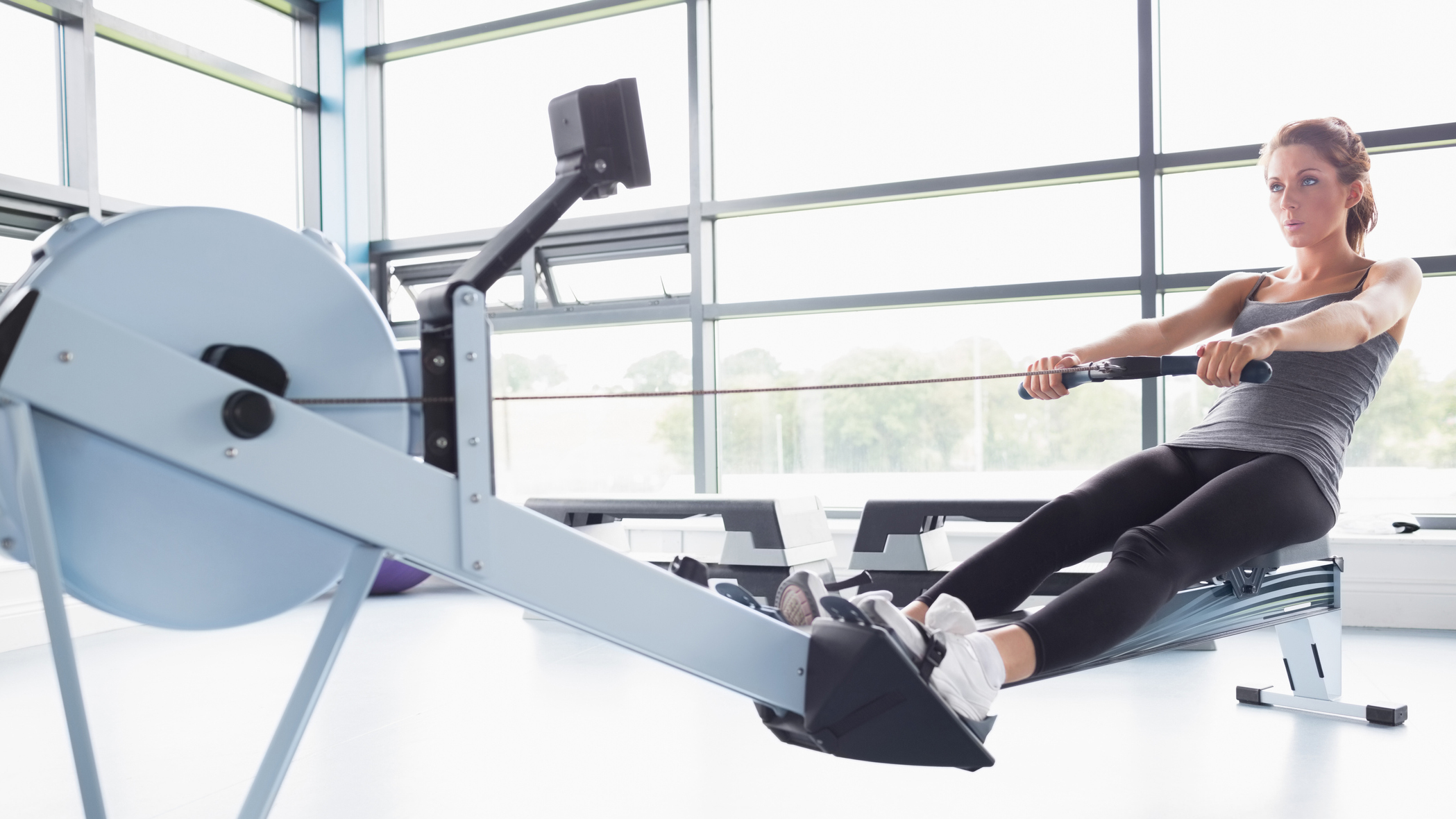Rowing machine form: How to maximize your workouts and avoid injury
A step-by-step guide to maximizing your rowing session and get more out of your machine


Rowing is a non-weight bearing sport that’s low-impact, easy on your joints and provides a great aerobic workout. However, it’s easy to make small mistakes on the machine, which can lead to an inefficient workout (and eventually even injury, especially to the lower back).
So you’ll be pleased to know that getting the right technique on one of the best rowing machines is a straightforward process that can lead to huge gains in your training. However, Annie Mulgrew, vice president and founding instructor of group workout phenomenon Cityrow, says that new rowers should be patient with themselves and know that it's going to take a little time.
“That’s because when rowing, 84% of your muscles have to activate in order to perform each stroke, but their ability to do that will ramp up in a short amount of time. Soon, you'll be able to develop that mobility and strength that you need in order to row properly.
“We have people who have never exercised before in their life who are able to row sitting next to professional athletes, so it really is a scalable workout,” adds Mulgrew. See the below information for Mulgrew's comprehensive guide to rowing machine form. Once you've got it down, go for broke with our 30-day rowing for weight loss fitness plan.
A step-by-step guide to correct rowing form

- Start in the Catch position
“The overall stroke technique begins at the front of the machine, and is called the ‘catch position’,” says Mulgrew. This is when your knees and hips are bent, with your torso leaning forward and your arms extended.
“It’s similar to the bottom of a deadlift position,” says Mulgrew. “Rowing is really a power sport – a push sport, very similar to a deadlift. It's important to feed your feet into the footpads, then place your hands on the handlebar as if they are on a barbell bar.”
At this point, your legs are loaded and ready to explode with power to drive you backwards.
Start your week with achievable workout ideas, health tips and wellbeing advice in your inbox.
“You really want to get down into that loaded position where you’ve hinged your torso forward with a big reach forward – you should be really tightly wound so you can put your bodyweight and leverage into the stroke.”

- Push into the Drive position
Now you should be primed to push with your legs into the drive position.
“That's when your legs and hips are fully extended, and your torso is leaning back,” says Mulgrew. “You should aim to open up your hips, by passing the torso from an 11 o'clock position through a 12 o'clock position and then finally landing in 1 o'clock position at the back of the machine. At that point, your arms should still be fully extended.”
Consider your breathing, and exhale throughout the push if you can.
At the end of the push, your arms and legs should be fully extended, with your abs engaged.

- Finish position
Mulgrew says this is where you initiate the pull of the handlebar into the area beneath your sternum – “if you are wearing a sports bra you should aim right where the bottom of the band right under your pectoral muscles would be”.
And that’s the main movement – catch, drive, finish.
- Recovery
This is essentially when you move back into the catch position, reversing the moves you just did, bending the knees and coming back to the front of the machine.
“That's the time when you should relax, as all the work of the stroke is happening from catch and drive to the finish,” says Mulgrew. “After that you're preparing to set up for your next catch position to start the next stroke.
“You want your body to be fully relaxed so that it can conserve energy and get into that deep tight, catch position that loads the stroke, so that you can initiate the next catch with as much power or effort as you want to put into it.”
In terms of breathing, you should aim to inhale as you recover back to the catch position.
Why correct rowing machine form is important
The reason why the body positioning and technique is important is because you should be trying to make each stroke as efficient as possible, and an efficient stroke is going to result in you travelling a further distance.
It also means you’ll burn more calories per stroke in a way that’s actually helping the body rather than wasting energy on the body doing things that aren't helping the stroke move forward.
“It's important for beginners to practise learning how to control their speed before they work on adding power to the stroke,” says Mulgrew. “Also, be mindful of the proper technique, especially moving the torso from that 11 o'clock to 12 o'clock back to 1 o'clock position, because that will keep your lower back safe.”
As mentioned previously, good rowing form stops you straining the wrong muscles, and prevents you from getting injured. It's important to warm up before a session to mitigate any other risk of "pulling" cold muscles.

Common rowing machine form mistakes to avoid
One of the most common mistakes that Mulgrew sees with new rowers is that they don't fully extend their legs and hips.
“With rowing, you're trying to use your strokes to propel you as far forward as you can. Each time you do a stroke is because you want your 'boat' to travel further.”
Even if you’re on a rowing machine, you’re still aiming for movement, and the further you can extend your legs, which is connected to extending the hips, the better.
“Often people don't know that they need to be leaning their torso back to the one o'clock position,” says Mulgrew, “but also many people have tight hip flexors and extensors, and weak hamstrings, due to sitting all day. So the muscles required to fully extend the legs are weak.
“That's why rowing is so great – the more that they can commit to it, the stronger those muscles will get, and they'll find they have more mobility and flexibility.” As mentioned above, warming up and doing regular stretching exercises will help loosen up those hamstrings and hip flexors, improving your workout and keeping you mobile well into old age.
Howard is a freelance health and fitness journalist and copywriter. He has written for publications including ShortList, Runner’s World, Trail Running, Women’s Running, Red Bulletin, Wareable and Cycling Weekly. He enjoys nothing more than lacing up his trail shoes and heading out to explore new trails. He’s run ultramarathons everywhere from the French Alps and Canadian mountains to the Welsh coast and Peak District. When not running, he’s usually found hitting his local MTB singletrack trails or on a quest to find the country’s best cinnamon bun.
